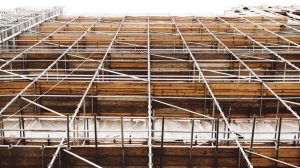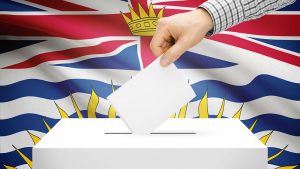British Columbia is doubling down on the details to support its museum modernization project.
The provincial government has released the business case for the proposed Royal BC Museum (RBCM) which will go forward with a $789 million price tag.
The project is composed of both the Collections and Research Building (CRB) and a new museum on the current site of the existing one in downtown Victoria. While the CRB project was approved in July 2020 in a previous business case submission, the newly released document focuses on the museum and the new facilities including galleries, the museum’s Indigenous collection, the IMAX Victoria theatre and offices.
“The business case resulted from extensive project evaluation during a five-year period, confirming the museum is at the end of its useful life with costs to upgrade existing buildings more than those to replace them with a new, modern facility,” a provincial government release stated.
Reasons cited for modernization include seismic vulnerability and flood risk, space constraints and poor condition of the facility. The business case stated “the facilities are beyond their useful life with major systems including heating, ventilation and air-conditioning systems that are outdated and do not consistently provide the required levels of temperature and relative humidity control necessary to preserve and protect the collections.”
“Two floors of our archives are underwater and at risk. If there was a flood it would wipe out the Douglas Treaties, it would wipe out the Emily Carr collection, then who’s to blame?” B.C. Minister of Tourism, Arts, Culture and Sport Melanie Mark said at a press conference May 25.
Mark also responded to questions concerning the significant price tag given a rising cost of living and inflationary concerns.
“I recognize $789 million may seem a lot for a capital project. The building spans over 6.5 hectares, houses seven million of our artifacts, 27 kilometres worth of our archives and shared history. Those documents and archives help inform treaty negotiations, helped with the discovery of children found in Tk’emlups. There’s important work that is behind the walls of the Royal BC Museum,” Mark said.
The case also cited design-build with construction management as the most effective procurement model and designated base building construction of the new museum as the scope of the design-build component, while construction management would focus on hazardous materials abatement, deconstruction of existing facilities and fit out of new exhibition and gallery spaces.
The project will also be one of the first of its size to partner with local First Nations on the project team in both project development and delivery, as well as incorporating design influences to reflect the Lekwungen peoples, and members of the Songhees Nation and Esquimalt Nation.
While some previous large-scale public projects in B.C. have used a Community Benefits Agreement framework, which required apprenticeship quotas and for workers to be unionized, in this instance the ministry opted for a procurement and contract terms approach.
“A procurement and contract terms approach will allow the RBCM, with feedback from project proponents, to set project-specific community benefits targets supported by incentives. This will meet community benefits objectives while, at the same time, giving constructors maximum flexibility in retaining labour and subtrades,” a B.C. ministry of tourism, arts, culture and support response to the Journal of Commerce stated.
“Through our analysis of the RBCM project, we know the procurement and contract terms model would deliver on our objectives to support training and apprentice opportunities for Indigenous people and businesses, and other traditionally underrepresented groups.”
The current museum will close permanently on Sept. 6 followed by demolition and redevelopment. The new museum is estimated to open in 2030.
The plan to build a new museum was announced on May 13 and immediately attracted detractors, including newly elected BC Liberals Leader Kevin Falcon. The Opposition took aim at the initiative as a “billion-dollar vanity project.”
Falcon cited the long wait time between tearing down the old museum and opening the new one, the project cost and the need to address other immediate issues such as inflation, high gas prices and increasing health care costs.
Green Party of BC MLA Adam Olsen, the MLA for Saanich North and the Islands and a member of Tsartlip First Nation, released a statement on May 17 in opposition.
“The announcement of a new Royal BC Museum is not an act of reconciliation. Spending nearly $800 million on a new museum while only investing $500,000 for repatriation of ancestral remains and items of cultural significance demonstrates how out of touch this premier is,” Olsen said.
“Without dramatically increasing repatriation funds to every First Nation that wants their items returned home, this new museum continues a legacy of colonization.”
The business case and 2018 concept plan are available to the public online.
Follow the author on Twitter @JOCFrey.











Recent Comments
comments for this post are closed